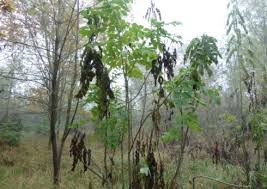Click here for the 'Seeds of Eaden' seed shop
When I was young I used to believe that the fungi rings left on lawns were where fairies lived and had magical properties. I used to sit in them and make daisy chains and play. Now I realise that fairy rings are a fungal disease of turf caused by toadstools.The usual cause of fairy rings is buried organic debris, such as undergrounds rotting tree stumps or roots, and removing this organic matter will often eliminate the clump of toadstools. There are many types of toadstools which are capable of growing in a ring and some rings grow bigger each year.
Not all rings are created equal. Some small rings may form that are small and do not require remedial action (class 1). However puffballs and mushrooms can produce bigger class 2 fairy rings which are recognised by the dark green grass at the edge of the ring, and these can be unsightly.
The toadstool Marasmius oreades produces the largest class 3 fairy ring, and this is truly a problem. Two dark green rings are formed and the space between them is bare and moss ridden. The ring may be small or it may cover the whole lawn, and control is always difficult..
The effect of fairy rings can be unsightly but they are difficult to eradicate unless the root cause of the ring (the buried organic matter) is removed. In some instances masking of the dark green rings can be achieved through the use of lawn feeds containing iron sulphate, which greens up the remainder of the lawn to help blend the ring into the surrounding areas.
Systemic fungicides chemicals such as Panama contain Azoxystrobin which can help to eliminate type 2 fairy rings from turf. The real answer is to remove the ring, turf and topsoil to a width and depth of 30 cm and replace with fresh soil and turf.
Prevention is better than cure, so remove all pieces of wood from the soil before making a lawn and keep it vigorous by following the correct lawn care techniques.
For related articles click onto:












